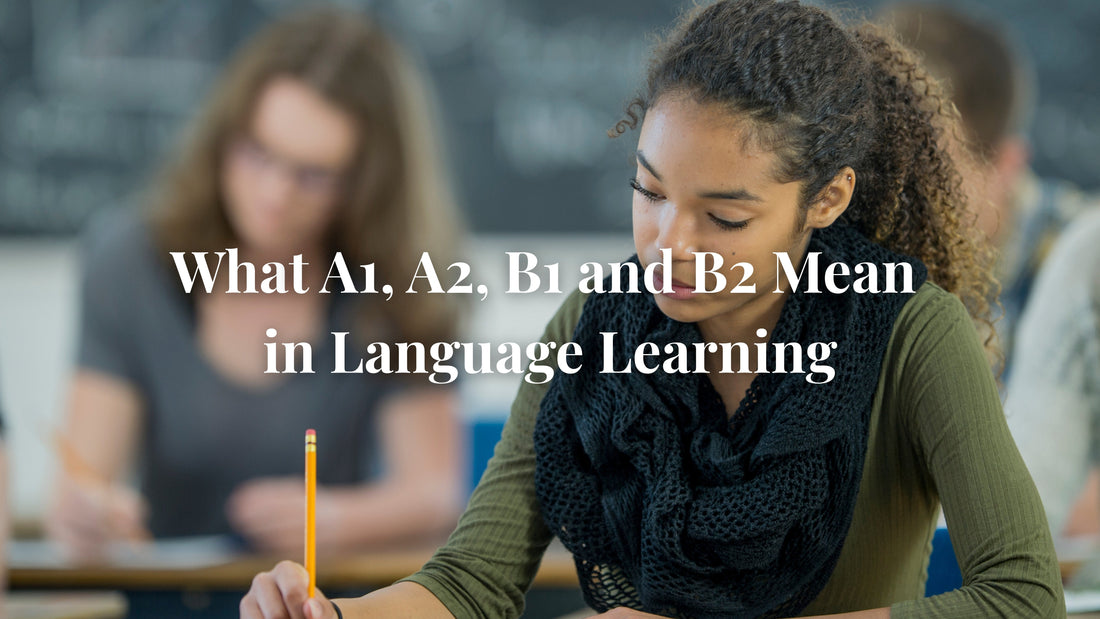
Complete Guide to the CEFR: What A1, A2, B1 and B2 Mean in Language Learning
Share
Have you ever seen language courses organized by levels A1, A2, B1 or B2 and wondered what they actually mean? These levels belong to the CEFR (Common European Framework of Reference for Languages), the most widely used international standard for measuring language proficiency.
In this article, we’ll explain in a clear way what each level means and how to choose the right course depending on your goals.
What is the CEFR?
The Common European Framework of Reference for Languages (CEFR) is an international standard that describes what a language learner can do at each stage of learning.
It was created by the Council of Europe to unify language teaching and certification across Europe. Today, it’s used by universities, language schools and official exams such as the DELE (for Spanish).
The CEFR Levels
The CEFR is divided into three main categories:
- A (Basic user): A1 and A2
- B (Independent user): B1 and B2
- C (Proficient user): C1 and C2
In this article we’ll focus on the most in-demand levels: A1, A2, B1 and B2.
Level A1 – Beginner. At this level, the learner can:
- Introduce themselves and share very basic personal information.
- Understand very simple phrases related to everyday life (shopping, family, directions).
- Communicate if the other person speaks slowly and clearly.
👉 Ideal for expats who have just arrived in Spain and need to manage in basic situations.
Level A2 – Elementary. At this level, the learner can:
- Talk about routines, likes and simple experiences.
- Understand short messages and announcements.
- Participate in simple conversations about everyday topics.
👉 Perfect for those who want to interact with the local community and gain more confidence in daily life.
Level B1 – Intermediate. At this level, the learner can:
- Describe experiences, dreams, plans and opinions.
- Understand clear texts on personal or professional interests.
- Handle most situations likely to arise while traveling or living abroad.
👉 Very useful for expats working in Spain or students who want a functional level of Spanish.
Level B2 – Upper-Intermediate. At this level, the learner can:
- Hold fluent conversations with native speakers.
- Understand the main ideas of complex texts, even technical discussions.
- Produce clear and detailed speech on a wide range of topics.
👉 Recommended for learners who want to fully integrate into academic or professional life in Spain.
How to Choose Your Level
The best way to know your level is by taking an online placement test or consulting with a qualified teacher. At MEDILEARN Jávea we offer Spanish courses from A1 to B2, aligned with the CEFR, with options for self-study, online group lessons, or 1-to-1 classes.
Conclusion
The CEFR is an essential guide to measure and plan your language learning journey. Whether you’re starting from scratch or preparing for an official exam, knowing your level will help you set clear goals and progress with confidence.
👉 Book your Spanish course at MEDILEARN Jávea and start learning according to your CEFR level.
